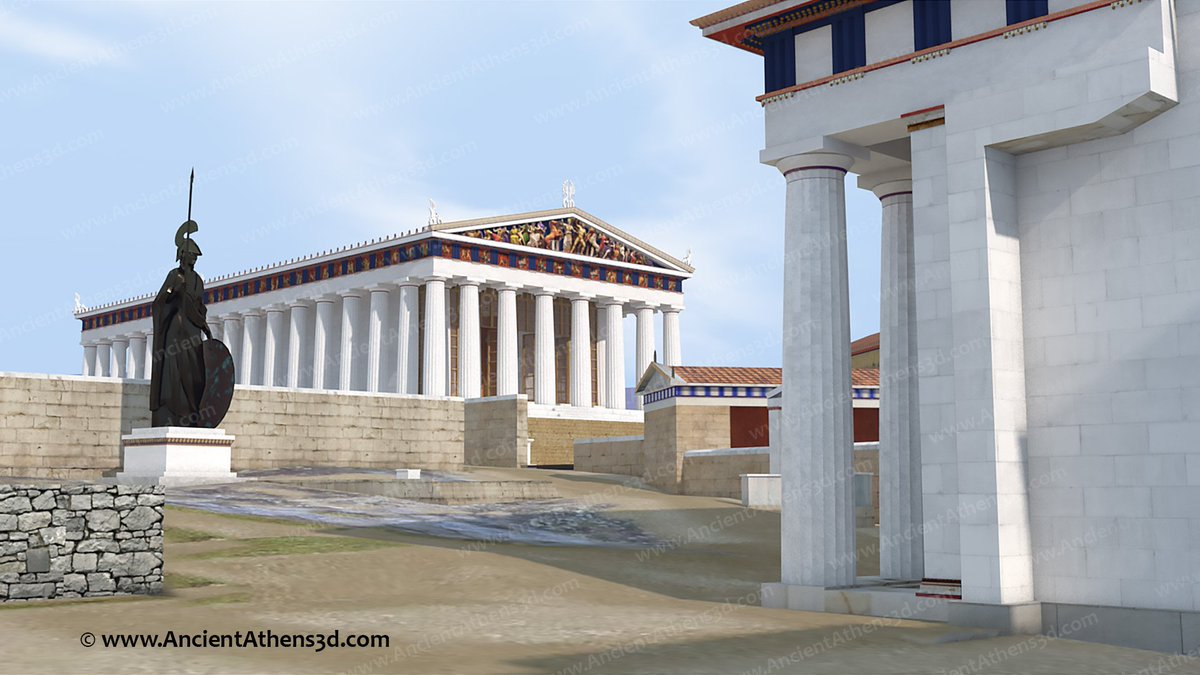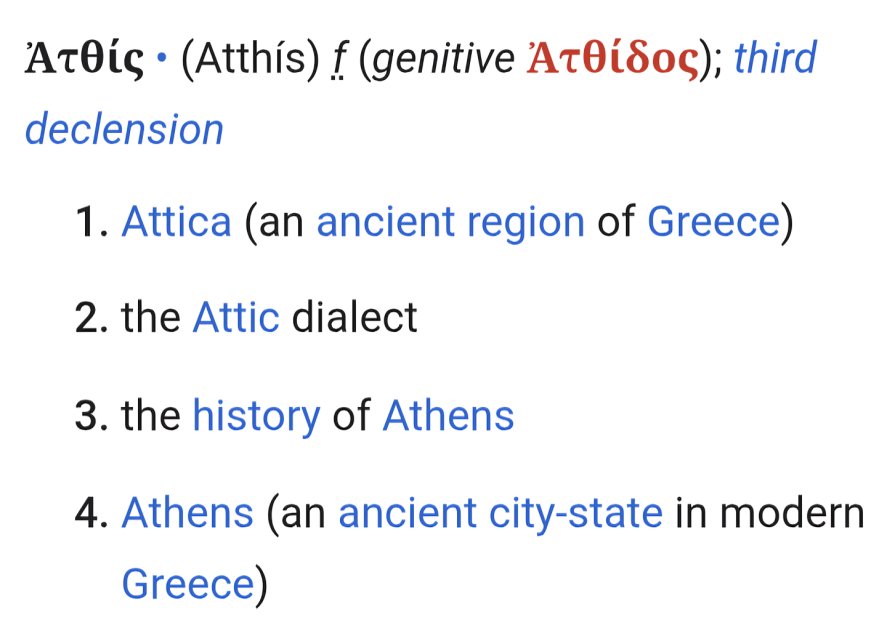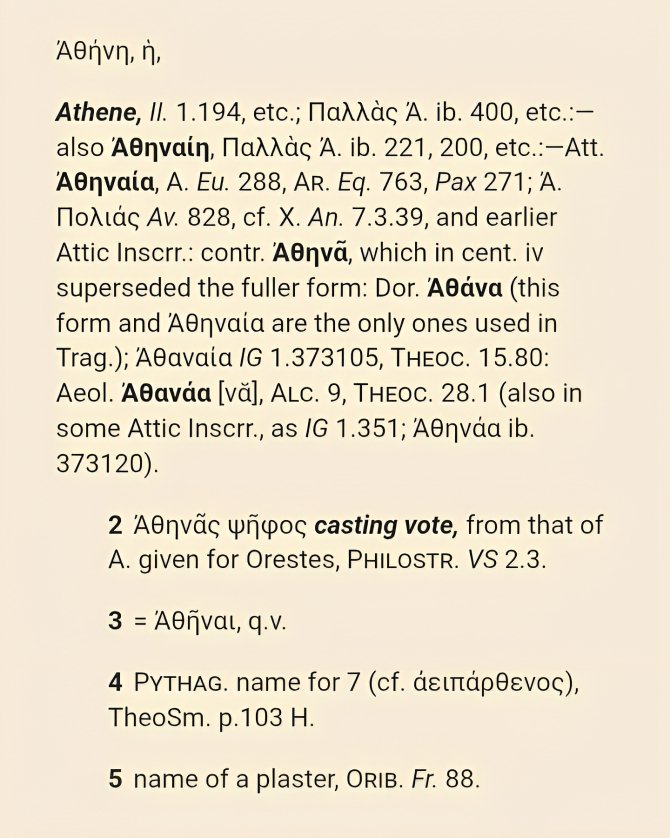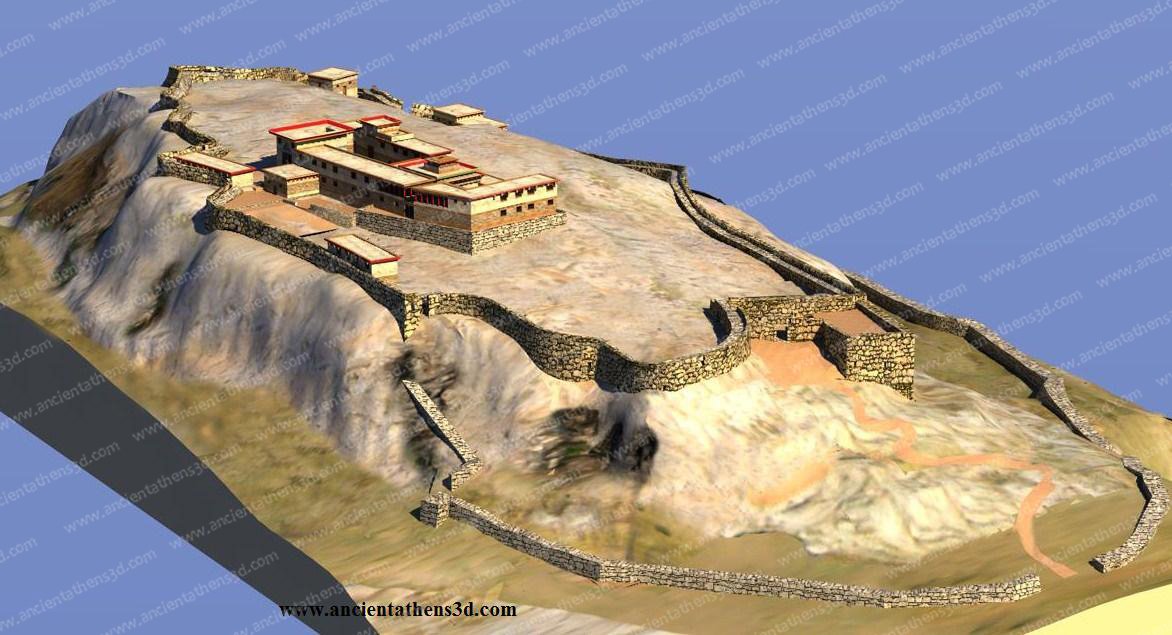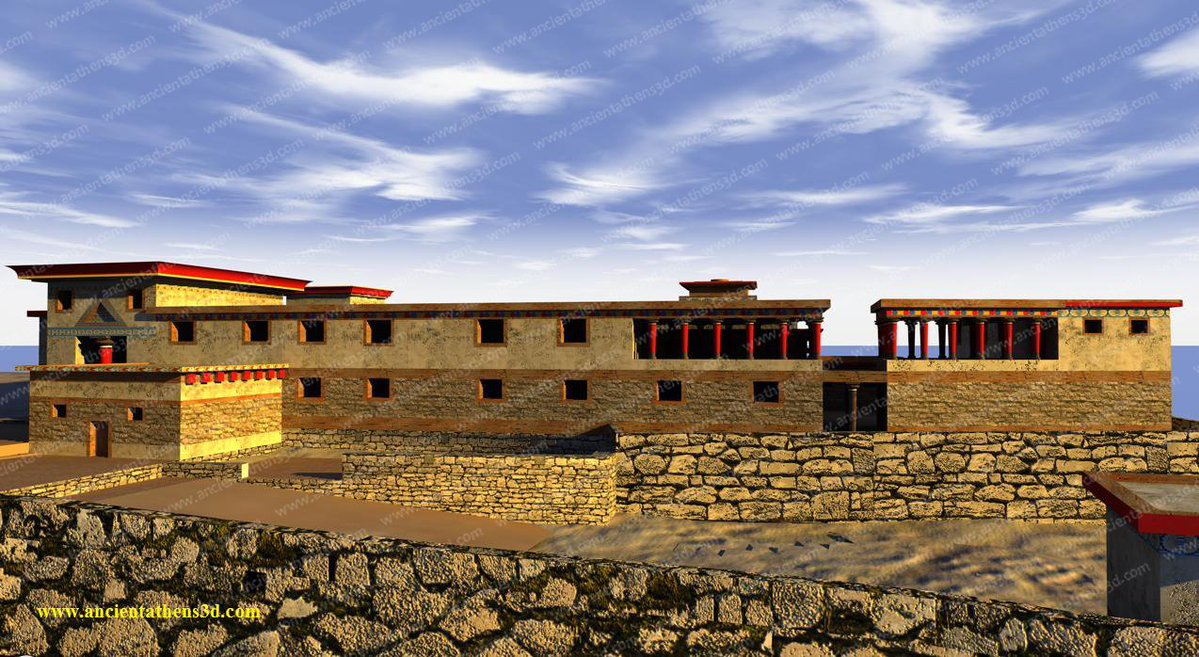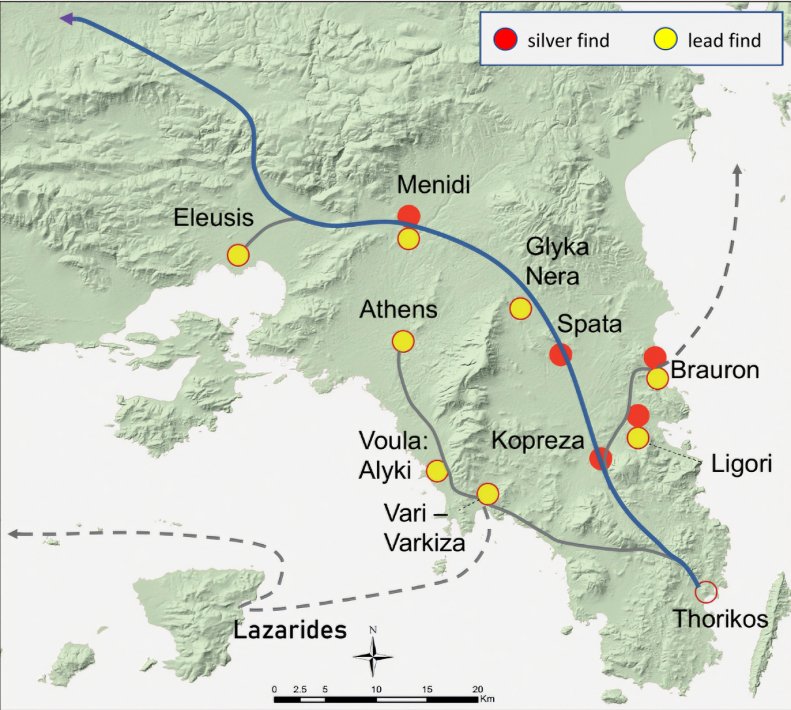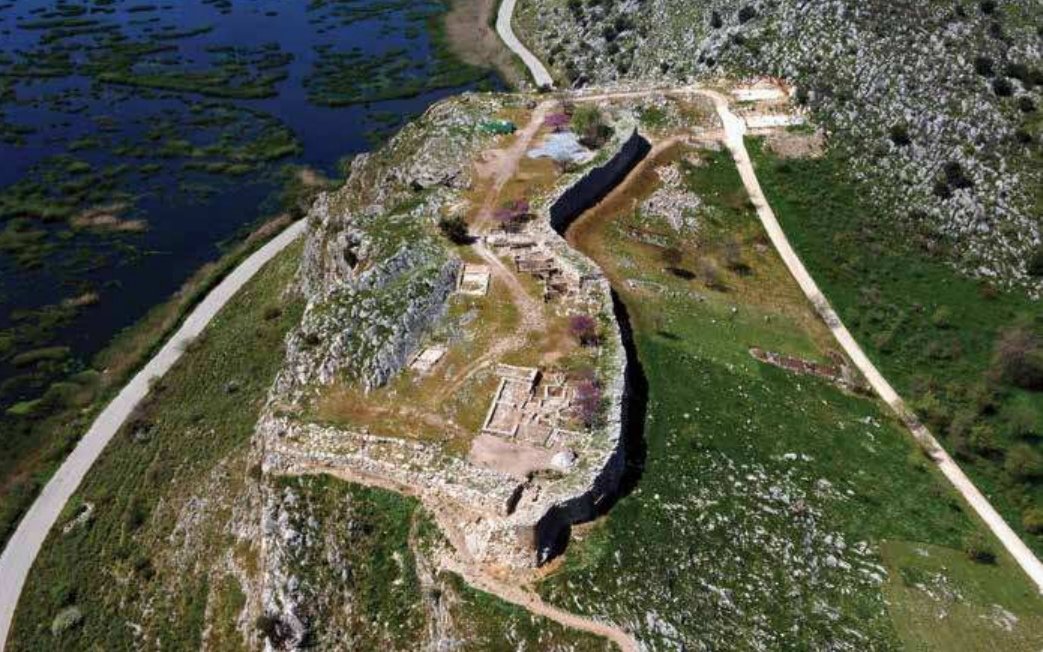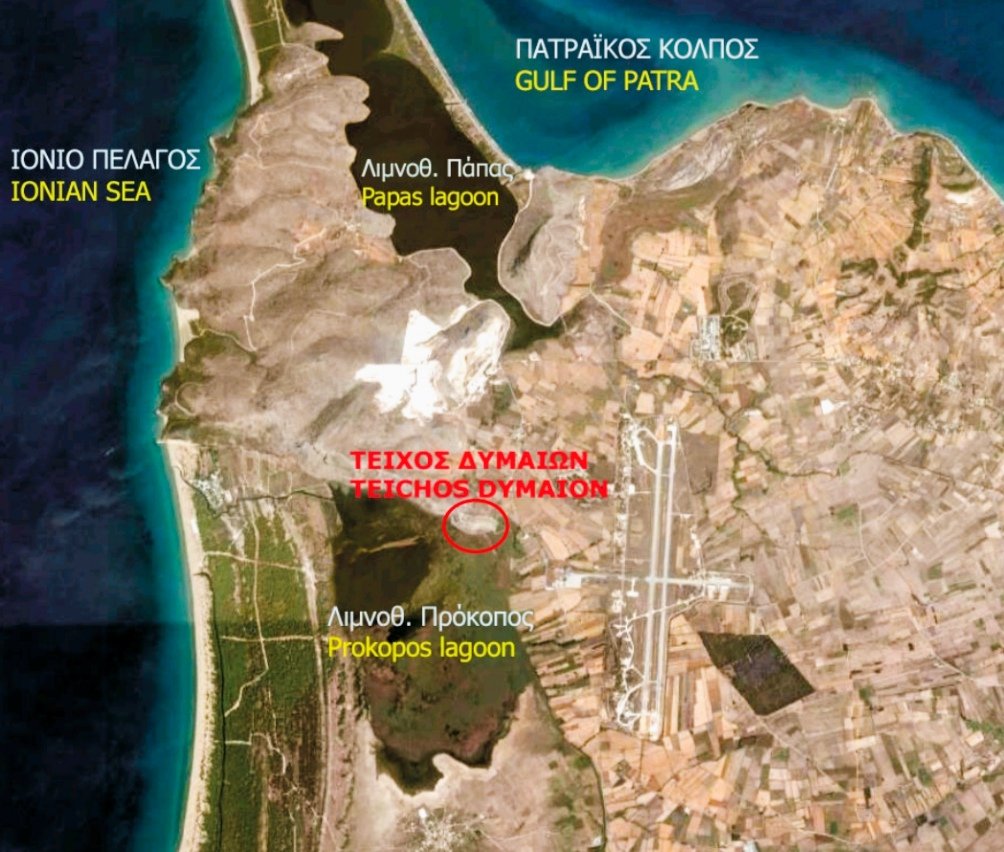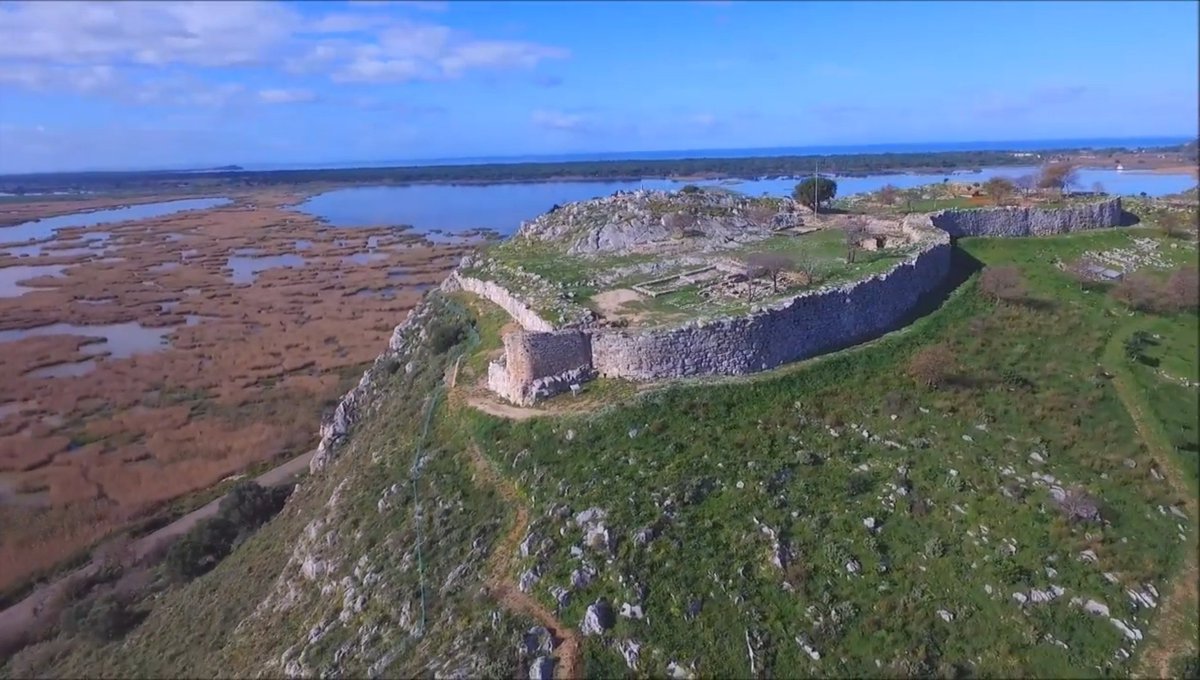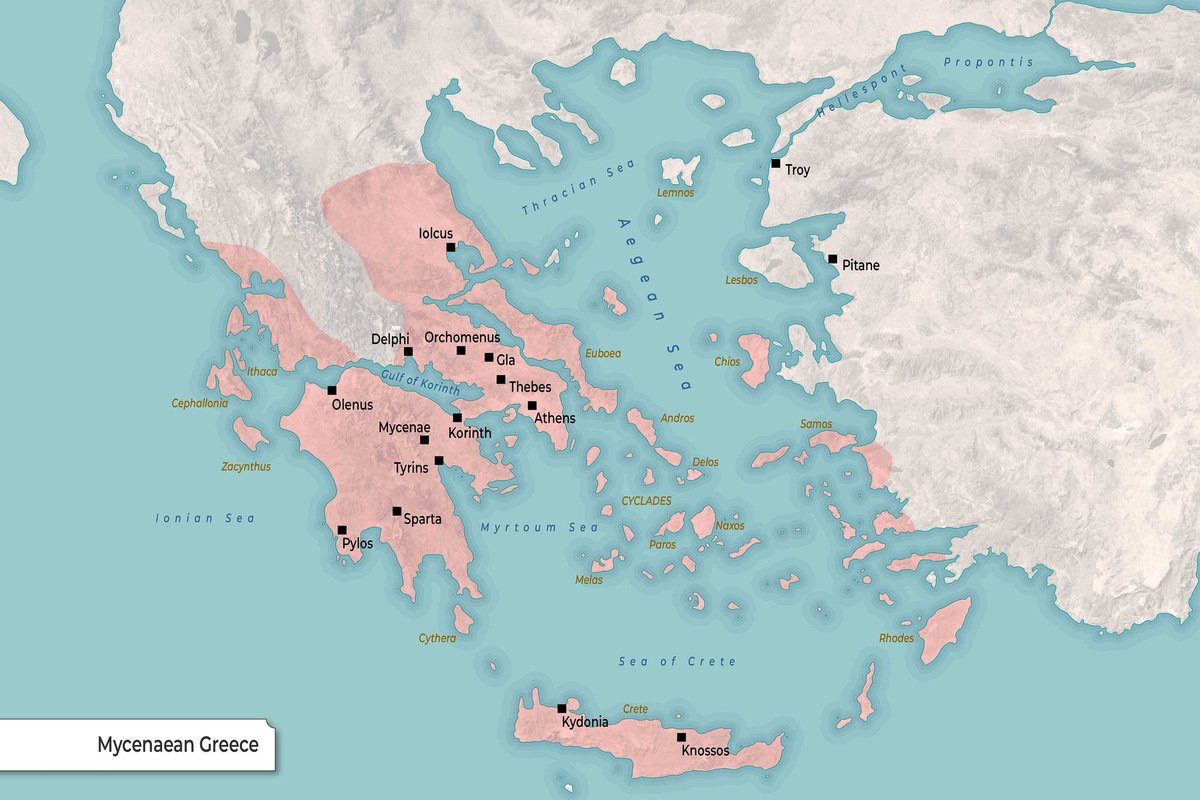1/ The main factor of the prosperity of the Mycenaean palatial elite was the existence of a successful commercial model, in which both the creation of an internal road network between the Mycenaean provinces and the presence of a powerful trade fleet played a catalytic role. 

2/ The bulk of goods were transported via sea routes, but the diverse topography of the mainland, the discontinuous coastline and the numerous islands near to inland led to the creation of a road network by which goods and military forces were transported. 

3/ The highly centralized administration facilitated the passage of trade caravans by placing military outposts (mainly watchtowers) and probably tolls along the land routes. Remains of this network have been found in Argolis and Messinia. 

4/ However, a corresponding land network for foreign trade did not exist, although it is certain that very specific routes were followed that crossed Europe, with caravans transporting amber and metal objects to the Aegean from every corner of continental Europe. 

5/ The difficulties of land transport were placing serious restrictions on trade, and thus there was a preference only for objects of light weight and great value, which could be more easily promoted inland. ➡️ 

➡️ Thus the Mycenaeans were limiting to conducting trade on the coasts without penetrating the interior of the countries with which they had commercial transactions. 

6/ On the contrary, ships allowed the cheap transport of bulky objects, absorbing the most important part of the Mycenaean trade. ➡️ 

➡️ The shipwrecks of Gelidonya, Uluburun and Iria give us a clear picture of the kind of goods carried by the Mycenaean and Levantine / Cypriot trade ships of the time: ingots of copper and tin, pottery, precious artefacts. 

7/ The Mycenaean trade ships had a flat keel,which allowed them to enter shallow harbors and pull them ashore, a raised bow,a piston in the stern as a lever, to steer them ashore,a large stern oar as a rudder, rowers arranged in a row,a cabin for the passengers and only one sail. 

8/ With these ships, the Mycenaeans managed to spread throughout the Mediterranean, perhaps even further. However, the difficulties were not disappearing. ➡️ 

➡️ These ships were relatively fragile in the frequent and intense rough waters of the Mediterranean, while at the same time the sailing direction was done by observing the sun and stars and flying pigeons that were releasing at sea. 

9/ Thus a ship rarely risked to be reopened in the open sea, but followed coastal routes, taking advantage of the favorable winds or resorting sometimes to the human power of the oarsmen, but mostly letting itself be carried away by the winds and sea currents. 

10/ If we observe a map of the surface sea currents of the Mediterranean we will be able to understand and chart the natural two-way course of an LBA trade ship, ➡️ 

➡️ which starts from Rhodes, embraces Crete, follows the west coast of the Peloponnese, heads north, with Corfu as an important intermediate port, to the strait of Otranto, which it crosses, to then sail around the Italian Peninsula to Sicily. 

11/ The success of the Mycenaean palaces lies in the production of low-cost and at the same time high-quality products, with Mycenaean pottery (stirrup jars and amphorae) flooding the major commercial ports of the Eastern Mediterranean and becoming a model for local imitations. 

12/ The Mycenaean potters had as a raw material excellent quality clay, they possessed the know-how to bake it at very high temperatures and had the high artistic skill to present products in wonderful shapes, which were decorated with tasteful patterns. 

13/ The Mycenaean pottery was either exported as is, or contained the main Mycenaean export products: wine, aromatic oils, ointments. Another great Mycenaean export product was the textiles, continuing the textile tradition of the Minoan Cretans. 

14/ But the Mycenaeans were not only successful exporters of agricultural and handicraft products, they also functioned as intermediaries. ➡️ 

➡️ For example Egyptian glass beads for necklaces from the 15th century BC were found in the Aeolian Islands, the Iberian Peninsula, Northern France, Brittany, England and Central Europe, attesting to Mycenaean participation in the transport of these objects. 

15/ In return for their highly exportable products, but also for their role as intermediaries, they received ores (copper, tin and gold), ivory, amber and exotic objects. It is impressive that the Mycenaeans of Crete imported Cypriot dyed wool, despite the large local production. 

16/ Of great interest are two texts from Pylos which show the word o-no (load) in combination with some goods, indicating the existence of an exchange system of values: ➡️ 

➡️ a load of Cypriot alum in exchange for 30 kg of wool and 10 pieces of linen cloth (PY Un 443) and a piece of fine cloth in exchange for 480 liters of wheat (PY Un 1322). 

• • •
Missing some Tweet in this thread? You can try to
force a refresh





